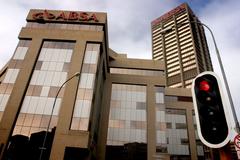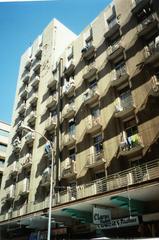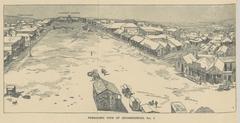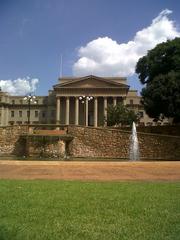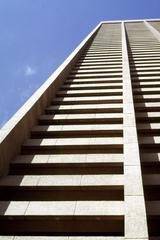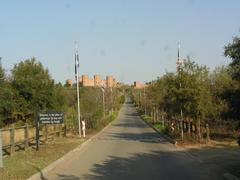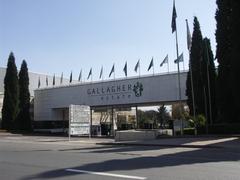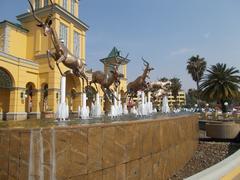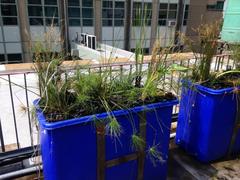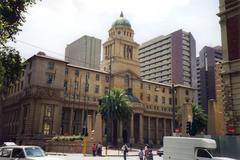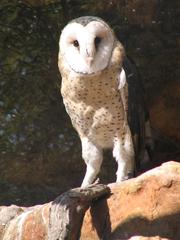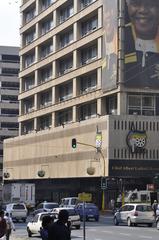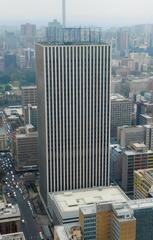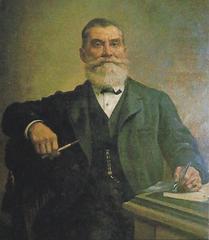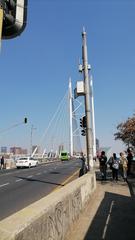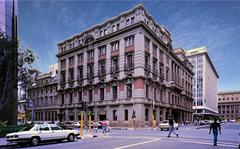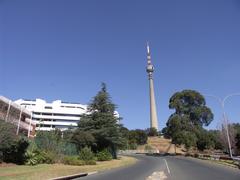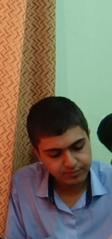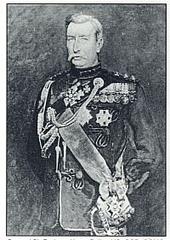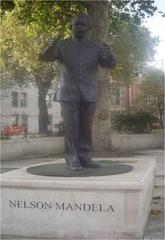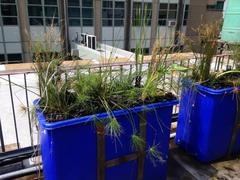Fietas Museum: Visiting Hours, Tickets, and Johannesburg Historical Sites Guide
Date: 14/06/2025
Introduction
The Fietas Museum, located in the historic Johannesburg suburb of Pageview, is a powerful testament to the resilience and rich cultural legacy of a community shaped by diversity, adversity, and eventual displacement. Once known as the Malay Location and later Pageview, Fietas was established in the late 19th century as one of the city’s first non-white residential areas. Over decades, it flourished as a multicultural hub, with 14th Street at its commercial and social heart. However, apartheid-era policies shattered this vibrant community, culminating in forced removals and the destruction of much of the built environment. Today, the Fietas Museum—housed in one of the few surviving heritage buildings—preserves this layered history through immersive exhibits, oral histories, and artifacts, providing deep insights into Johannesburg’s urban evolution and the enduring spirit of its marginalized residents (SA History Online; The Heritage Portal; RSA WorldOrgs).
Table of Contents
- The Origins and Development of Fietas
- Community Life and Multicultural Identity
- Forced Removals: The Group Areas Act
- The Birth and Role of the Fietas Museum
- Visiting Information: Hours, Tickets, and Travel Tips
- Exhibitions and Educational Programs
- Accessibility and Facilities
- Nearby Attractions and Suggested Itineraries
- Frequently Asked Questions (FAQ)
- Conclusion and Visitor Encouragement
- References
The Origins and Development of Fietas
Fietas, initially called the Malay Location and later Pageview, is among Johannesburg’s oldest suburbs. Established in 1893, it was allocated as a residential area for non-white communities, particularly Cape Coloureds and Malays (SA History Online). Over time, especially after the 1904 bubonic plague, Indian South Africans displaced from the Coolie Location settled in Fietas, making up the majority by the 1940s (Wikipedia). This demographic transformation contributed to a remarkably diverse and harmonious neighborhood.
Community Life and Multicultural Identity
Fietas was renowned for its dynamic, integrated social life, often likened to other legendary South African communities such as District Six and Sophiatown. Fourteenth Street bustled with Indian-owned shops, family-run businesses, mosques, schools, and cinemas, fostering a strong sense of belonging among residents. The area’s multiculturalism was not only evident in its commerce but also in daily life, as neighbors of different backgrounds celebrated together and built lasting bonds (SA History Online; The Heritage Portal).
Forced Removals: The Group Areas Act
The apartheid government’s enforcement of the Group Areas Act in 1950 marked a devastating turning point for Fietas. Declared a “white” area, the suburb saw mass forced removals from the 1950s through the 1970s. Indian families were relocated to Lenasia, Black residents to Soweto, and a significant portion of the neighborhood was demolished. The government constructed the Oriental Plaza as compensation for displaced traders, but the community’s unique vibrancy was irreparably damaged (Wikipedia; SA History Online).
The Birth and Role of the Fietas Museum
In the wake of widespread demolition, only a handful of original structures survived, one of which now houses the Fietas Museum. Declared a heritage resource in 2007, the museum opened on Heritage Day, 24 September 2013, as a living memorial to the area’s multicultural past and the trauma of forced removals (RSA WorldOrgs). The building itself, once the Surtee’s/Kay’s Fashion Building, is a rare example of late 19th-century architecture and stands as a symbol of survival (Medill Reports; TimesLIVE).
The museum preserves and exhibits oral histories, photographs, documents, and artifacts donated by former residents. Its participatory approach invites visitors to add personal photographs and postcards, continually enriching its collection (Medill Reports).
Visiting Information: Hours, Tickets, and Travel Tips
- Location: 25 14th Street, Pageview (Fietas), Johannesburg
- Visiting Hours: The museum is typically open Wednesday to Sunday, 10:00 AM–4:00 PM. Hours may vary for special exhibits or events; visits outside these times are by appointment only (Facebook; Evendo).
- Tickets and Admission:
- Adults: R30
- Students/Pensioners (with valid ID): R15
- Children under 12: Free
- Group rates and guided tours available by advance booking; donations are encouraged to support ongoing preservation (Facebook).
- Travel and Parking: Accessible via car, taxi, or public transport (Rea Vaya bus, minibus taxis). Ride-hailing services (Uber/Bolt) are convenient. Street parking is limited—early arrival is suggested.
- Safety: The area is safe by day; group travel and vigilance are recommended.
Exhibitions and Educational Programs
The Fietas Museum features permanent and rotating exhibitions that chronicle the rise, destruction, and partial rebirth of Fietas:
-
Permanent Collection:
- Photographs by David Goldblatt, capturing daily life and forced removals (New Braamfontein Lofts).
- Artifacts, household items, shop memorabilia, and personal testimonies.
- Interactive displays on apartheid-era legislation and its impact.
-
Temporary Exhibits and Community Art:
- Seasonal exhibits highlight figures like Nelson Mandela and Desmond Tutu, or themes of displacement and resistance (Miss Tourist).
- Projects such as “Faces to Remember Places” showcase portraits of former residents on the museum façade (Inside Out Project).
-
Educational Programs:
- Guided tours (60–90 minutes) by knowledgeable local guides.
- Workshops and storytelling sessions for schools and community groups.
- Advance booking for group activities is recommended.
Accessibility and Facilities
- Physical Accessibility: The museum provides ramps and accessible restrooms to accommodate visitors with mobility needs. Due to the heritage building’s structure, some limitations may remain—contact the museum in advance for specific requirements.
- Languages: Multilingual signage (English, Afrikaans, isiZulu) is available.
- Facilities:
- Reception area and exhibition rooms across two floors.
- Restrooms and a small gift shop with local crafts.
- No on-site café, but nearby Fordsburg and Pageview offer diverse dining options.
Nearby Attractions and Suggested Itineraries
Combine your visit to the Fietas Museum with other Johannesburg historical sites for a richer cultural experience:
- 44 Stanley: Art, shopping, and dining complex (21 minutes’ walk)
- Market Theatre: Iconic venue for South African drama (24 minutes’ walk)
- MuseuMAfricA: Major museum of African history (22 minutes’ walk)
- Constitution Hill: Living museum and former prison (7 minutes’ drive)
(Trek Zone; New Braamfontein Lofts)
Frequently Asked Questions (FAQ)
Q: What are the Fietas Museum’s opening hours?
A: Wednesday to Sunday, 10:00 AM–4:00 PM; closed Mondays, Tuesdays, and public holidays. Confirm via Facebook or phone for special event days.
Q: How much are tickets?
A: Adults R30, students/pensioners R15, children under 12 free.
Q: Is the museum wheelchair accessible?
A: Yes. Ramps and accessible restrooms are available; contact the museum for specific accommodations.
Q: Are guided tours available?
A: Yes, by advance booking for an additional fee.
Q: Can I take photos inside the museum?
A: Photography is generally allowed, but flash and video may be restricted in some exhibits.
Conclusion and Visitor Encouragement
The Fietas Museum is far more than a collection of artifacts—it is a living memorial to the enduring spirit of a community that faced forced removals, urban segregation, and the trauma of apartheid. Through exhibitions, personal testimonies, and educational outreach, the museum fosters reflection, dialogue, and reconciliation. Visitors are encouraged to plan ahead, book tours, and support this vital institution through donations and participation in cultural events. Exploring the Fietas Museum not only deepens your understanding of Johannesburg’s layered history but also honors the resilience and hope of its communities.
For up-to-date information on visiting hours, ticketing, and special events, refer to the museum’s Facebook page or contact them directly. Enhance your visit by combining it with other Johannesburg historical sites and using travel platforms like the Audiala app for curated local insights.
References
- SA History Online
- The Heritage Portal
- Evendo
- Facebook Fietas Museum
- Wikipedia – Pageview, Johannesburg
- Medill Reports
- TimesLIVE
- Miss Tourist
- Trek Zone
- New Braamfontein Lofts
- Inside Out Project
- RSA WorldOrgs

